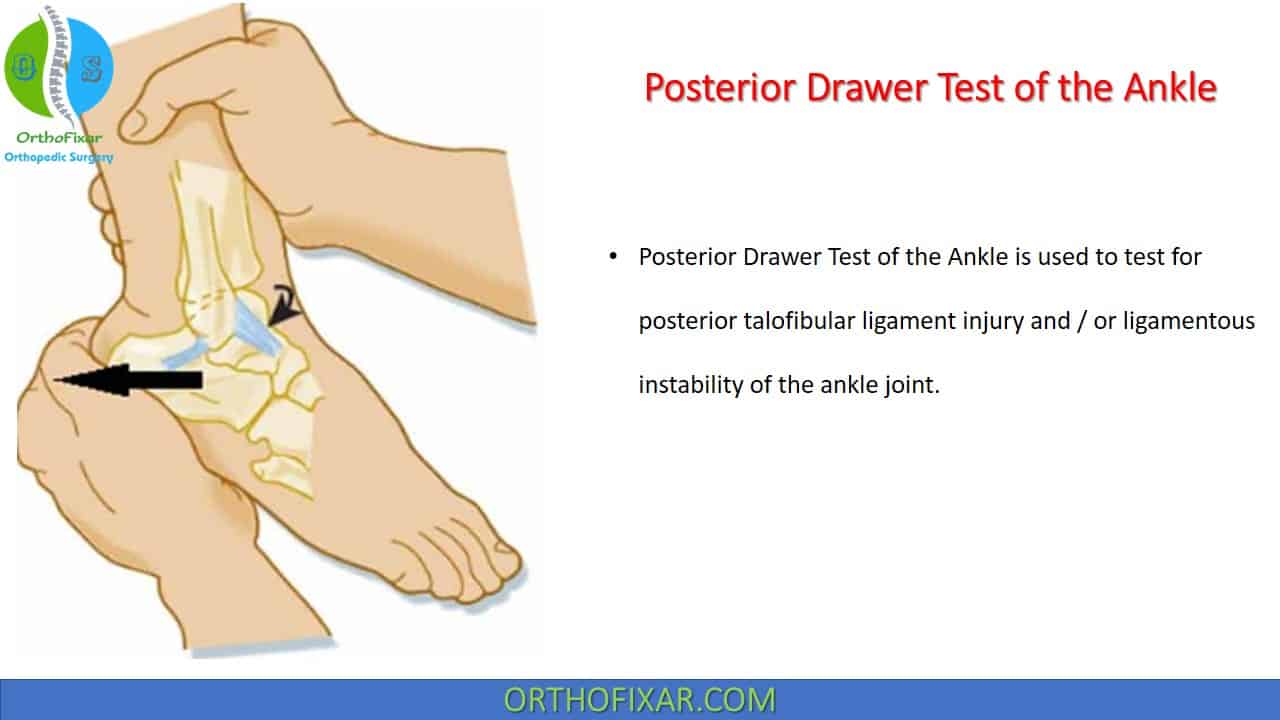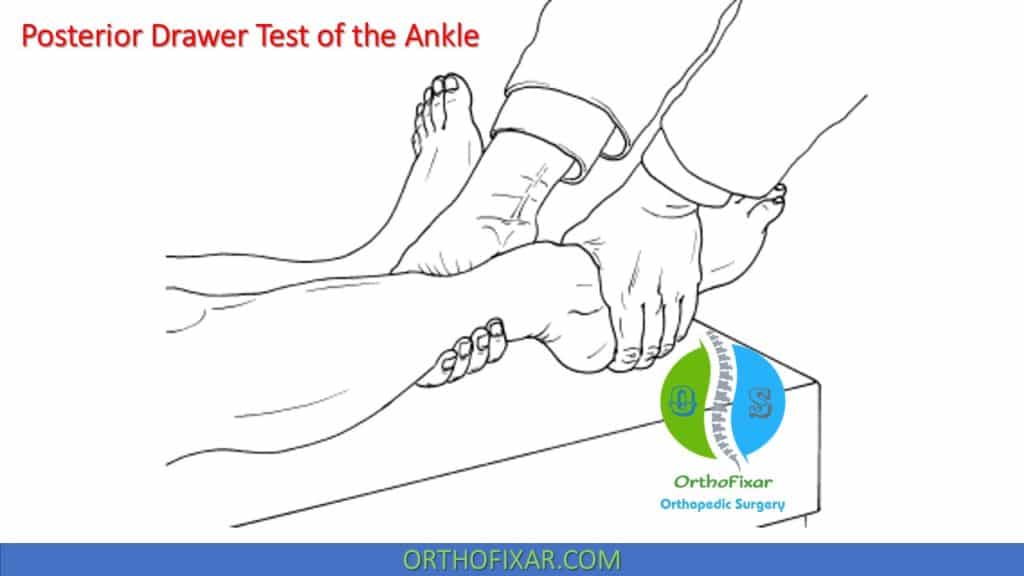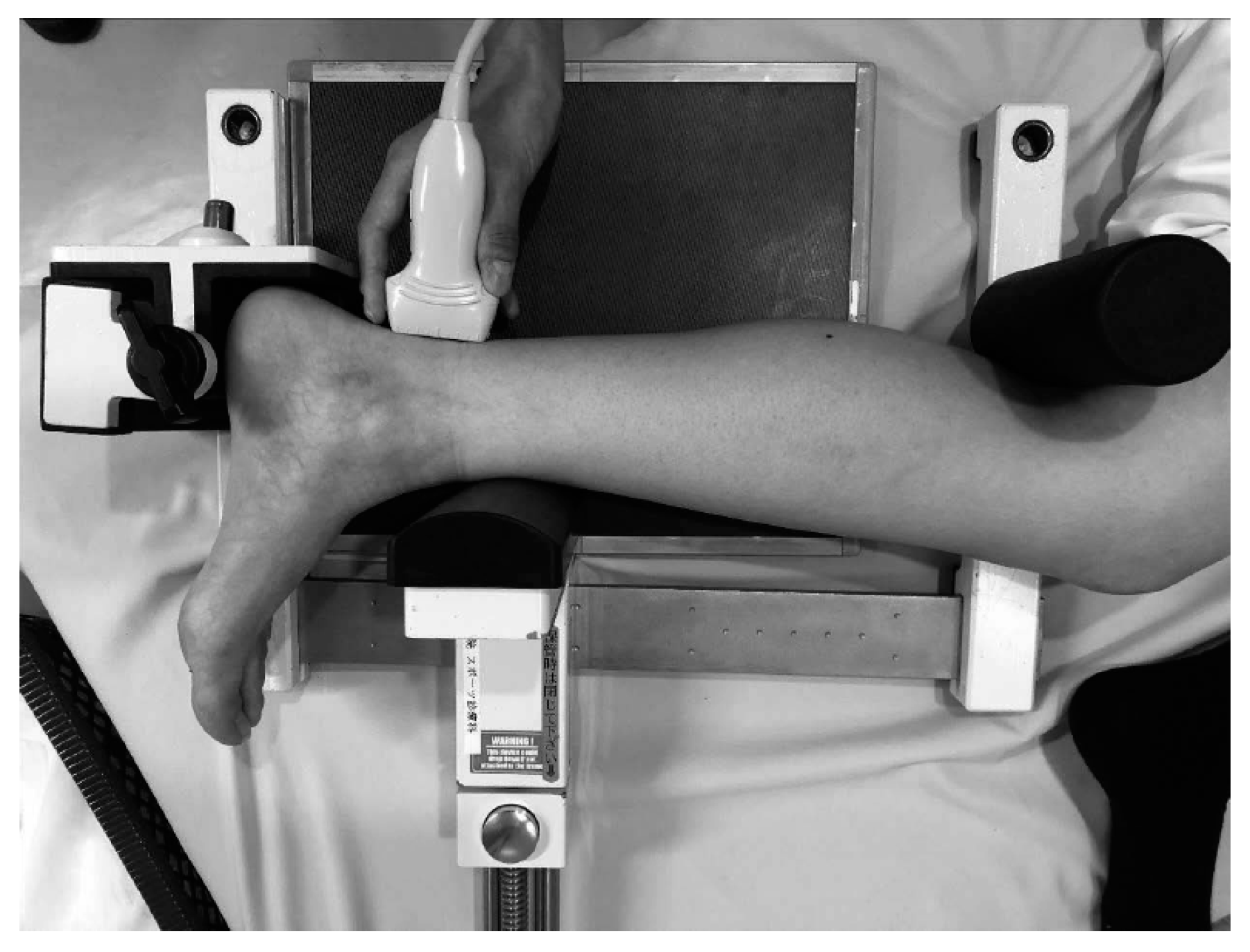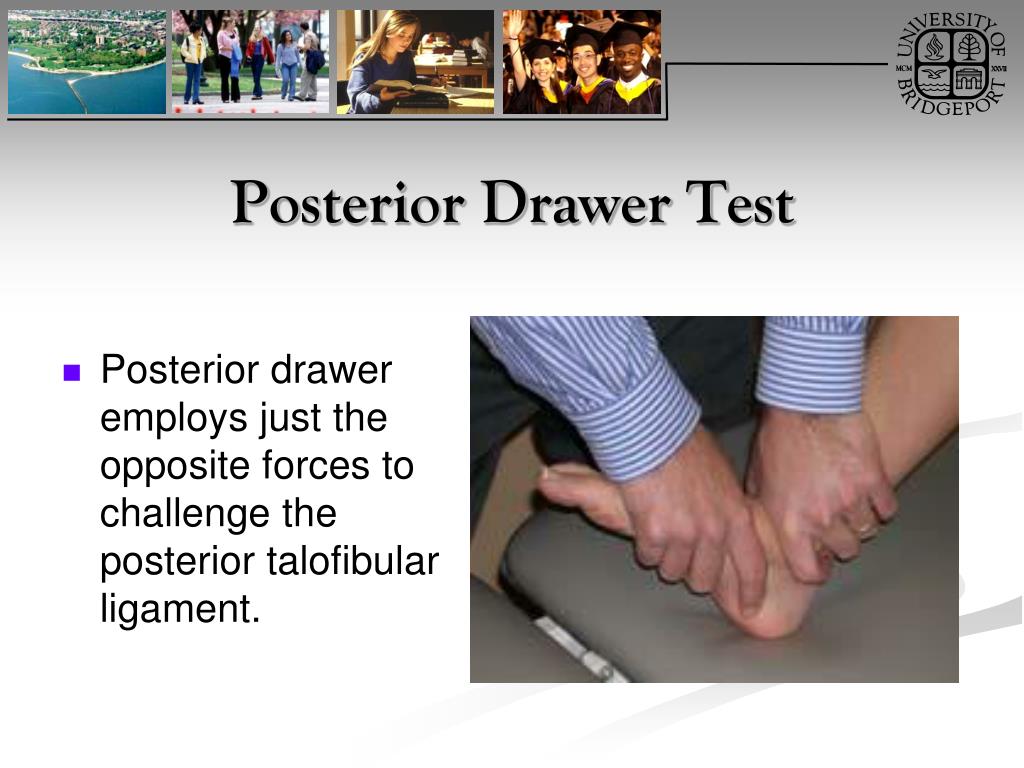Ankle Posterior Drawer Test
Ankle Posterior Drawer Test - We have a new website!! Under greatest strain in ankle dorsiflexion and acts to limit posterior talar displacementwithin the mortise as well as talar external rotation. Patient is supine with foot relaxedtherapist stabilizes tibia and fibula with one handwith the patient’s foot plantar flexed to 20 degrees, the therapist holds the patient’s calcaneus with other hand then distracts the calcaneus from the tibia and fibula (by slowly pulling the. For this test, the examiner stabilizes the patient's lower leg with one hand, puts the other hand under the patient's foot and cups the heel, and pulls the heel anteriorly. Web this video demonstrates how to perform a posterior drawer test for the ankle. Frost and hanson 7 described the posterior drawer test using the same patient and clinician positioning as that used for the anterior drawer test. The anterior drawer test for ankle. Web the painful conditions of the ankle and foot are very common presentations and most commonly caused by trauma or injury related to sport activities. This test helps to rule in a positive posterior talofibular ligament sprain. Normal end feel and limited posterior translation, indicating intact ligaments. The patient is positioned to promote relaxation with the knee flexed to 90 degrees and the ankle positioned at 90 degrees. Normal end feel and limited posterior translation, indicating intact ligaments. Web posterior drawer test. In particular, it prevents the talus bone from moving too far forward. Web anterior drawer has sensitivity of 86 percent and specificity of 74 percent for a diagnostic test of 160 patients with an inversion ankle sprain when compared to an arthrogram. Want to join the oep community? Web anterior drawer test (integrity of anterior talofibular ligament). Web testing for:posterior talofibular ligament injury and/or ligamentous instability procedure: Web special test:posterior drawer test (ankle) procedure: Under greatest strain in ankle dorsiflexion and acts to limit posterior talar displacementwithin the mortise as well as talar external rotation. Web ankle posterior drawer test is performed with the patient lies supine with the knee slightly flexed to neutralize the pull of the gastrocnemius muscle. Test for “high” (syndesmotic) ankle sprain (see below) imaging. This test helps to rule in a positive posterior talofibular ligament sprain. The examiner attempts to translate the fibula from anterior to posterior. You’ll lie on. Web 5.apply posterior pressure on the calcaneus and talus, and overpressure at the end of the passive range. At the attachments of the medial and lateral ligaments; In particular, it prevents the talus bone from moving too far forward. Validated only for patients > 17 years old. With the ankle joint held at 10 to 15° of plantar flexion, the. Want to join the oep community? Normal end feel and limited posterior translation, indicating intact ligaments. Web ankle posterior drawer test is performed with the patient lies supine with the knee slightly flexed to neutralize the pull of the gastrocnemius muscle. Web the anterior drawer test is a physical exam to diagnose acl tears. In acute injuries, the eversion stress. Web anterior drawer test: Web the anterior drawer test checks the health of the anterior talofibular ligament (atfl), a key ligament that helps keep the ankle joint stable. With the patient supine, flex the patient’s knee to 90º and place their foot flat on the table. Web the painful conditions of the ankle and foot are very common presentations and. •patient is supine with foot relaxed •examiner stabilizes tibia and fibula with one hand •with the patient’s foot plantar flexed to 20 degrees, the examiner holds the patient’s calcaneus with other hand then distracts the calcaneus from the tibia and fibula ( by slowly pulling the calcanues inferiorly) Web the anterior drawer test checks the health of the anterior talofibular. Web the anterior drawer test checks the health of the anterior talofibular ligament (atfl), a key ligament that helps keep the ankle joint stable. Web special test:posterior drawer test (ankle) procedure: Web the anterior drawer test can be used to assess the integrity of the anterior talofibular ligament 8 , and the inversion stress test can be used to assess. Web the anterior drawer test is a physical exam to diagnose acl tears. Plays only a supplementary role in ankle stability when the lateral ligament complex is intact. Click here to check it out:. Healthcare providers sometimes call this a posterior drawer test, and some perform it at the same time as an anterior drawer test. In acute injuries, the. In particular, it prevents the talus bone from moving too far forward. For this test, the examiner stabilizes the patient's lower leg with one hand, puts the other hand under the patient's foot and cups the heel, and pulls the heel anteriorly. In the normal ankle, there is a firm end point and little movement. Anterior drawer sign this is. Healthcare providers sometimes call this a posterior drawer test, and some perform it at the same time as an anterior drawer test. Web the posterior drawer test is used to assess the integrity of the posterior cruciate ligament. Validated only for patients > 17 years old. In acute injuries, the eversion stress test may be of limited clinical value. Under. Web the painful conditions of the ankle and foot are very common presentations and most commonly caused by trauma or injury related to sport activities. Web anterior drawer test (integrity of anterior talofibular ligament). The examiner attempts to translate the fibula from anterior to posterior. Joint laxity indicates a positive test. Web 5.apply posterior pressure on the calcaneus and talus, and overpressure at the end of the passive range. For this test, the examiner stabilizes the patient's lower leg with one hand, puts the other hand under the patient's foot and cups the heel, and pulls the heel anteriorly. Web anterior drawer test: Patient is supine with foot relaxedtherapist stabilizes tibia and fibula with one handwith the patient’s foot plantar flexed to 20 degrees, the therapist holds the patient’s calcaneus with other hand then distracts the calcaneus from the tibia and fibula (by slowly pulling the. On the medial, lateral, posterior and anterior part of the lower leg and the around calcaneus; This test assesses for a tear of the posterior cruciate ligament (pcl). Web ankle posterior drawer test is performed with the patient lies supine with the knee slightly flexed to neutralize the pull of the gastrocnemius muscle. Anterior drawer of the ankle. Web the anterior drawer test checks the health of the anterior talofibular ligament (atfl), a key ligament that helps keep the ankle joint stable. Web the anterior drawer test is a physical exam to diagnose acl tears. Web this video demonstrates how to perform a posterior drawer test for the ankle. In particular, it prevents the talus bone from moving too far forward.Posterior Drawer Test Of The Ankle 2024
Posterior Drawer Test Of The Ankle 2024
Posterior Drawer test of ankle YouTube
Posterior drawer test for the ankle YouTube
Posterior Drawer Test Posterior Cruciate Ligament YouTube
Ankle Posterior Drawer Test YouTube
Posterior Drawer Test, PCL Injury Tests —
Posterior Drawer Test I 후거비인대(PTFL) 염좌 평가 I ankle10 YouTube
Posterior Drawer Test Ankle
Click Here To Jump Onto Our Email List.
Anterior Drawer Sign This Is A Provocative Test.
The Anterior Drawer Test Helps Evaluate Ankle Injuries, Particularly From Outward Rolls That May Stretch Or Tear The Atfl.
Click Here To Check It Out:.
Related Post:









